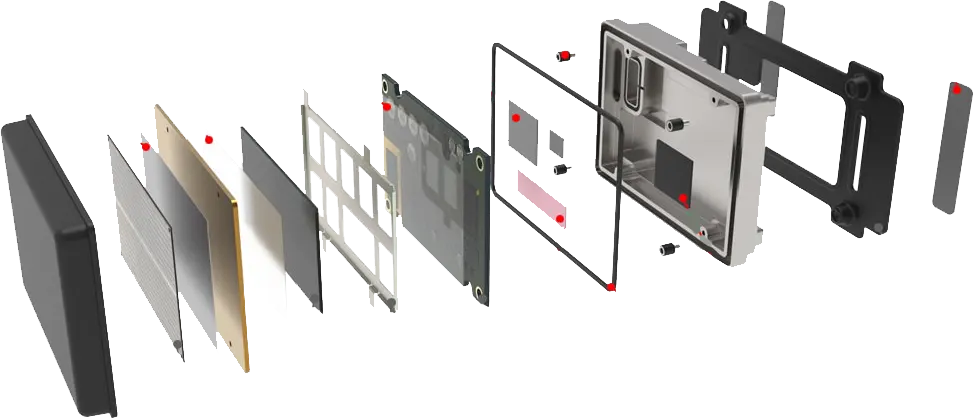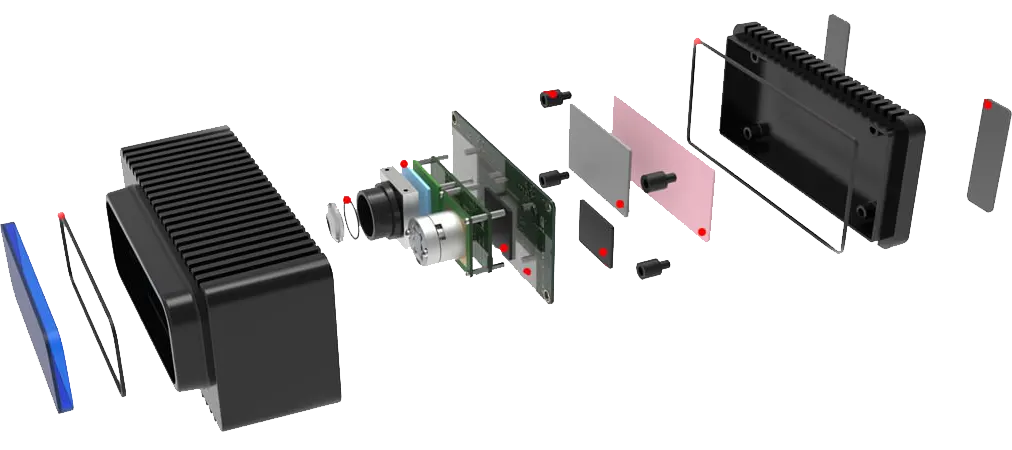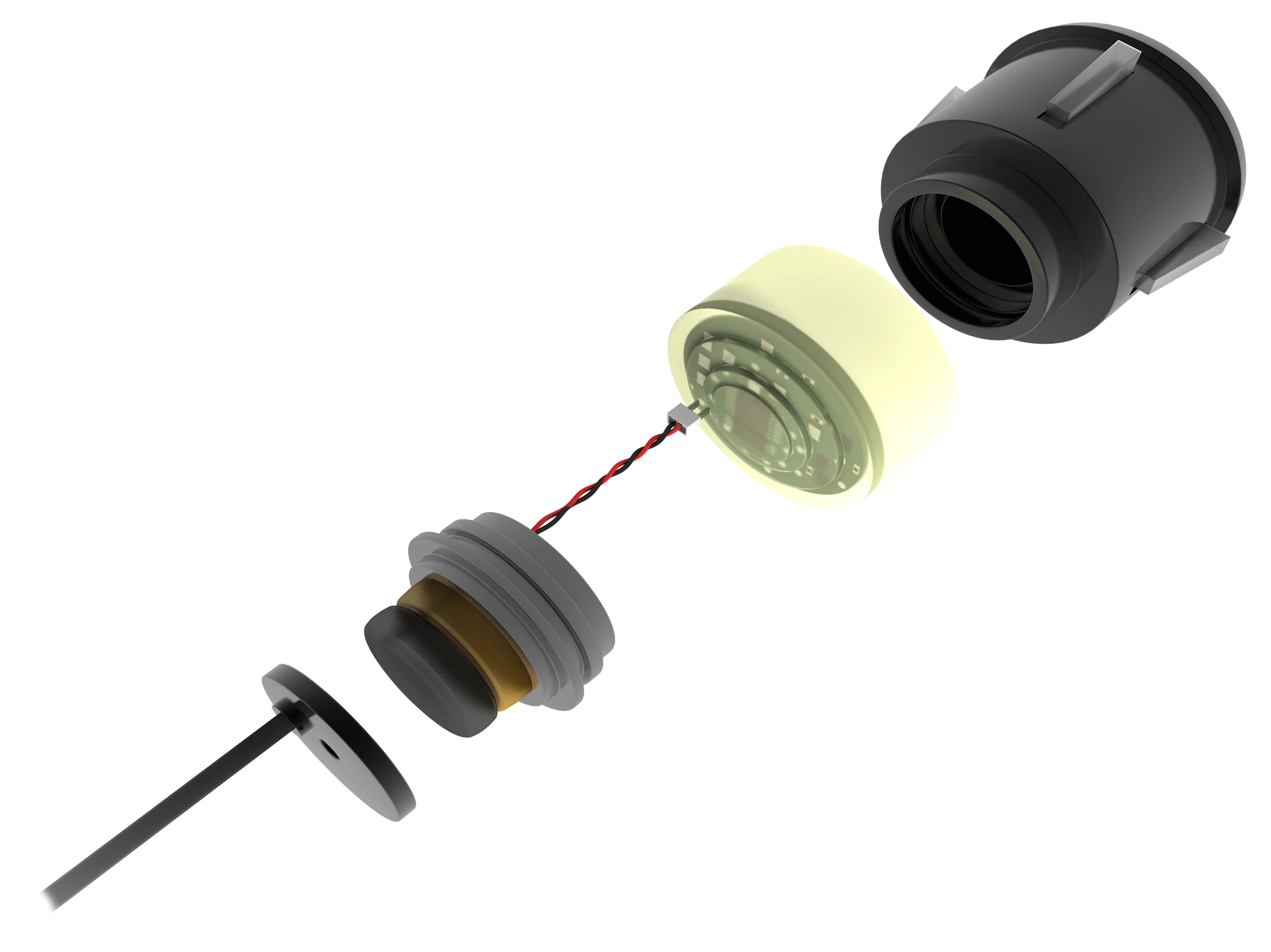Enhancing automotive sensor performance for tomorrow’s vehicles
Self-driving cars, flying taxis, drone deliveries… It’s clear that we are in the midst of a global mobility transformation. It’s driven by the need to improve vehicle safety, reduce accidents on roadways, improve transportation efficiencies, and increase profitability with new mobility models. Technologies in advanced driver assistance systems (ADAS), autonomous driving (AD), and 5G connectivity – which enables vehicle-to-vehicle (V2V) and vehicle-to-everything (V2X) communications – are evolving to address these needs. And automotive sensors are at the center of it all. They will enable better situational awareness, improve control and make driving easier and safer. They can also be instrumental in achieving more efficient traffic flow, reducing commute times, and helping to improve the safety of citizens.

We can help you integrate, protect, and optimize sensors in your vehicles. And that’s just the start. With multiple technology platforms and deep automotive and electronics experience, we can help maximize the performance of the increasingly sophisticated camera, radar, LiDAR, and ultrasonic sensor systems in nearly any part of the vehicle. In short, we can help you meet the automotive sensor design challenges you face today and into the future.
Explore solutions. Discover possibilities.
Solutions for Camera Sensors
From parking assist to lane departure warning and driver monitoring systems, camera sensors will remain at the core of the automotive sensing and perception suite as the industry evolves from ADAS and active safety technologies to highly automated driving. 3M offers a wide range of solutions to integrate, protect and optimize camera systems and help you capture their full potential.





















Integrate Camera Sensors
Successful integration of cameras into vehicles means successful bonding, joining and concealment – without affecting functionality. Vibration-free imaging depends on strong bonds, stress relaxation and often a delicate balance of both. Camera brackets, lenses, image signal processors and many other crucial camera components must bond to a variety of substrates. And camouflage film conceals IR cameras, allowing for the seamless placement of driver monitoring camera systems where they will be most effective.
Protect Camera Sensors
Protecting camera sensors from moisture and shock requires easily incorporated, highly-engineered solutions. These include engineered cushioning foams and elastomers that disperse impact energy and absorb vibration. They also include ultra-thin and easy-to-apply electronic grade coatings that help to protect printed circuit boards (PCBs) against moisture and corrosion. For exterior camera applications such as back up cameras, we offers a replaceable film to protect against inclement weather and other contaminants.
Optimize Camera Sensors
Successful integration of cameras into vehicles means successful bonding, joining and concealment – without affecting functionality. Vibration-free imaging depends on strong bonds, stress relaxation and often a delicate balance of both. Camera brackets, lenses, image signal processors and many other crucial camera components must bond to a variety of substrates. And camouflage film conceals IR cameras, allowing for the seamless placement of driver monitoring camera systems where they will be most effective.
Solutions for Radar Sensors
As the automotive industry works toward increased vehicle autonomy levels, radar sensors will be critical to enable key ADAS functionality such as adaptive cruise control and automatic emergency braking. With long-range millimeter wave radar, these sensors are also an excellent complement to camera and LiDAR technologies and can help to unlock more automated driving possibilities. Our solutions can help address key design challenges to ensure radar keeps performing as intended./























Integrate Radar Sensors
Radar sensors perform well in all types of weather, and must have bonding solutions to match. This requires a blend of permanent adhesion and viscoelastic stress relaxation under load for internal and external applications. Inside the unit, structural liquid adhesives can provide strength for narrow bond lines. And our thin bonding tapes, including double sided and adhesive transfer tapes, feature a variety of chemistries including silicone for bonding PCBs to copper plates.
Protect Radar Sensors
Corrosion and weathering are particular concerns for protecting radar sensor components, especially PCBs. A great solution: Electronic Grade Coatings. These ultra-thin, easy-to-apply coatings protect against corrosion without the need for thermal curing. They provide a uniform oleophobic and hydrophobic layer to shield against moisture, chemicals and other particulates inside the radar sensor unit.
Optimize Camera Sensors
A big challenge for radar sensors: their construction requires engineered thermal management solutions that direct heat away from signal processing units and the components needed to generate radio frequencies. With increased connectivity and electronics in the vehicle, electrically conductive tapes and EMI absorption materials are more important than ever to ensure signal integrity. Tapes for bonding flexible printed circuits (FPCs) withstand high temperatures and adhere to a wide range of substrates without lifting. And well-placed anti-reflective material can help minimize radar wave reflections from a variety of emblem systems.
































Similar to radar units, ultrasonic sensors help to determine speed and distance through sound waves. As part of the ADAS system, it is generally used at low speeds and at short distance, often for park assist, self-parking, and blind-spot detection.
Typically, ultrasonic sensors are placed on the front and rear bumpers. Reliability and functionality depend on effective component integration and vehicle mounting, as well as structural bonding, thermal protection , Potting and encapsulation.
Useful Information
Elastomeric Materials Solutions for ADAS
Material Solutions for Advanced Driver Assistance Systems (ADAS) and Autonomous Driving Sensors Sensors play a key role in advanced driver

